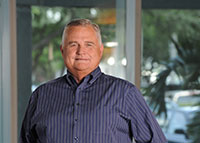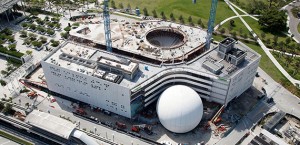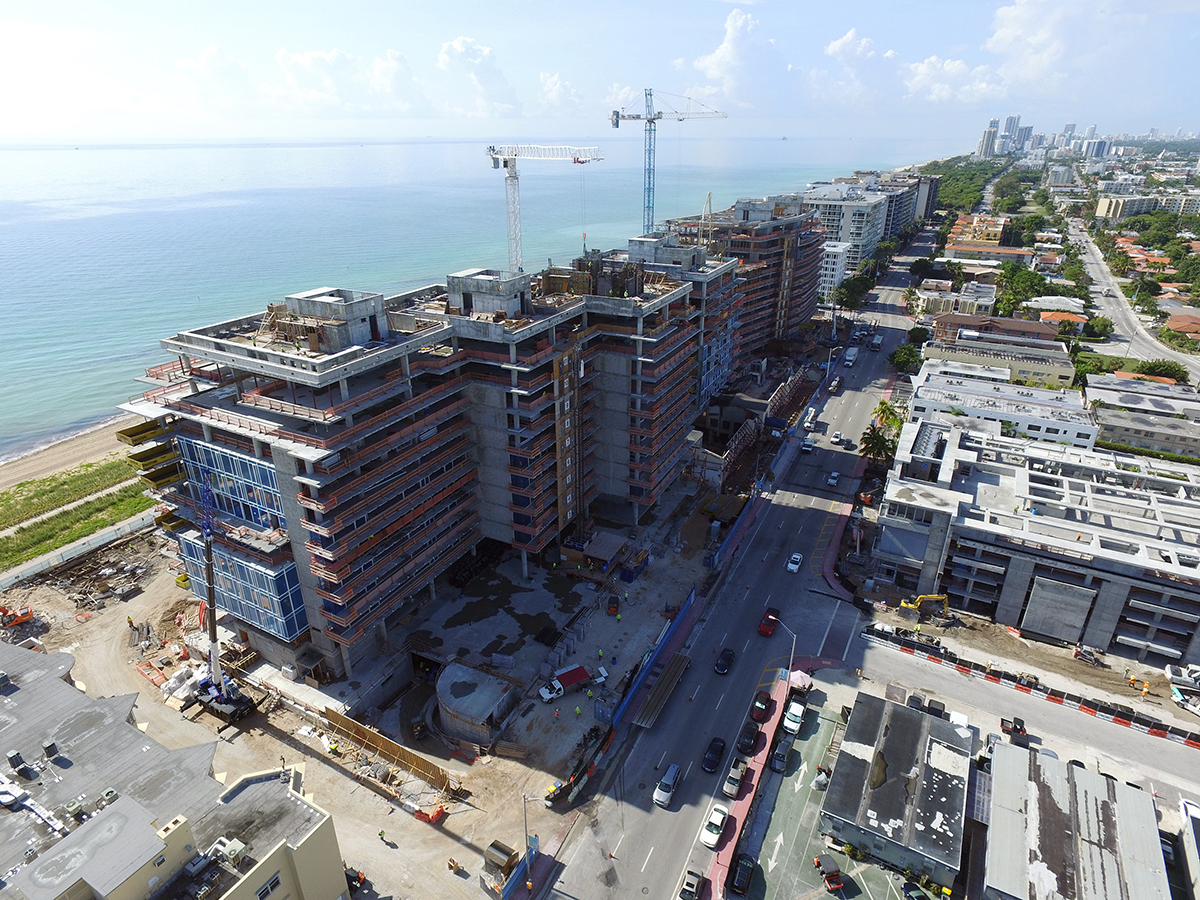South Florida is awash with new developments and active construction sites.
And as Tropical Storm Erika barrels toward the Florida coastline — currently forecast to strengthen to a Category 1 hurricane — such open sites, full of cranes and loose materials, lie in the potential line of fire — with millions, if not billions of dollars at stake.
So, construction companies and developers with projects in the works throughout South Florida were gearing up on Thursday to protect those sites, in advance of a potential hurricane impact on Monday.
“This is an unusual situation, in that the current forecast track shows Erika possibly being a Category 1 on Monday morning and possibly skirting the coast of Florida, but the uncertainty of the forecast track is what affects everything in a construction company’s plan,” said Dan Whiteman, vice chairman of Miami-based Coastal Construction, which has 17 active construction sites between Key West and Palm Beach County, all within 10 miles of the coastline.
“Every construction project is on a very tight schedule, and to shut down a project one or two days in advance, not knowing if the storm is going to come or not, is as bad as the possible outcome if you don’t prepare,” he told The Real Deal.
Hurricane Andrew hit on a Monday morning, Aug. 24, 1992, and was initially forecast to be a Category 1 or 2 hurricane. But by the time it got over the Gulf Stream, it had intensified to a Category 4, later determined to be a Category 5.

Dan Whiteman
“As a result of that event, we set up a plan in our company that is a four-day look ahead, which starts when a tropical storm is named, and we monitor it until we are placed under a tropical storm watch,” said Whiteman, whose active sites include Surf Club Four Seasons, the Faena District and Porsche Design Tower.
“At the time it becomes a tropical storm watch, we start implementing things that need to be done: clean all the job sites of loose or potentially flying debris, empty trash dumpsters, and make sure all construction materials are removed from the ground floor or edges of the building,” he said.
“When a tropical storm or hurricane warning is issued, we accelerate it to a point where when it becomes one day ahead of the storm, all job sites are secured, we have relocated computers away from job trailers, we have backed up all the computer data to the server in case computers get damaged, buy gasoline for generators [and vehicles] and we get cash available.”
It’s not just rebar, piping and nails that are at stake when a hurricane approaches. The Related Group, known for its sizable art collection, was already starting to protect its art on Thursday. Related’s art director, Patricia Hanna, was moving about 80 pieces of art out of the developer’s sales centers, and securing all of the outdoor pieces, a company spokesperson told TRD.

Frost Museum of Science
Skanska USA Building on Thursday was also preparing its six active construction sites in South Florida, including the massive Patricia and Phillip Frost Museum of Science, a $100 million project on Biscayne Boulevard near downtown Miami.
“First and foremost if you are trying to decide what to do now you are in deep trouble,” said MacAdam Glinn, senior vice president for Skanska USA Building, who oversees all operations in South Florida. “Before we even start a project we have a project-specific hurricane plan in place.”
Of most dire concern, he said, is debris, such as shoring or bracing used to hold up buildings while construction is underway. The museum is not yet “dried in,” so all the walls and windows are not yet in place, he said.
“We have to make sure [the shoring] is removed from the site or secured somewhere,” Glinn told TRD. “That is a major consideration because it could break down to smaller pieces that become missiles.”
Also, low lying areas can be prone to flooding, such as the basement level at the Frost Museum of Science.

MacAdam Glinn
“We have pumps in place and generators to run the pumps, and back-up pumps in case the pumps don’t work,” he said. “The water issue is a major issue. The wind issue is a major issue.”
Skanska plans to have everything secured, and the site locked down and ready to go on Saturday, Glinn said. “We are executing our plan right now and we feel very comfortable that we will be prepared as best as we possibly can be, well in advance of the storm.”

Gil Dezer
At Porsche Design Tower in Sunny Isles Beach, all the loose materials were being clamped down on Thursday, or else brought inside, said developer Gil Dezer, president of Dezer Development. Glass is up on about 75 percent of the building, but not on the top several floors. “It opens the building to the elements,” said Dezer, although false roof systems exist in the elevator shafts.
“We’re just holding our breaths,” he told TRD.
“I’ve been doing business in South Florida here long enough that is this the normal course of doing business,” Dezer added. “I don’t get excited until after the fact.”
